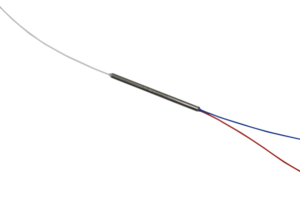The use of polarization maintaining components is widespread in telecommunication, networking, and instrumentation industries. Do you know what’s common among most polarization-maintaining (PM) components? Many PM components, such as PM fused splitter, feature polarization-maintaining fibers. In this post, you will learn about polarization-maintaining fibers in brief

Before we discuss PM fibers, first of all, it is useful to know how to achieve polarized light.
HOW TO OBTAIN POLARIZED LIGHT
One common way to attain single polarization is to use a polarization filter. Such a device, we call it polarizer, filters out one-half of the vibrations when a light wave passes through the filter. In other words, when you pass unpolarized light across a polarization filter, it comes out with half the original intensity and vibrations of a single plane only. The light that emerges with the vibrations of a single plane only is referred to as polarized light.
WHAT IS A POLARIZATION-MAINTAINING FIBER?
Polarization-maintaining fiber or PM fiber is a special single-mode fiber that allows the input light to propagate only in one polarization mode as opposed to traditional single-mode fiber that carries randomly polarized light.
The characteristic that makes a PM fiber most desirable in laser, fiber optic, communication, and other applications is that it is capable of maintaining the polarization of linearly-polarized light when it propagates through it, and little or no cross-coupling of optical power occurs between polarization modes. This feature of PM fiber is extremely crucial for some fiber optic components, such as modulators which require pure polarized input light.
This characteristic of maintaining the polarization throughout the propagation process is achieved by inducing stresses in the material itself during the manufacturing phase.
Polarization maintaining fibers contain a feature that you won’t find in other types of fibers. Apart from the fiber core, this fiber also contains stress rods that can be seen in many forms in different types of PM fibers, such as circles (in Panda PM Fibers), ellipse (in elliptical-clad PM Fibers), and bow-ties (in Bow-Tie PM fiber).
These stress rods are responsible to generate stress in the fiber core in a way that only one polarization plane of light can transmit across the fiber. Thus, when PM fibers are terminated using fiber connectors, stress rods must align with the connector key correctly. Besides, when it comes to splicing, PM fibers require great care because not only do the X, Y, and Z planes need to be perfect when the fiber melts, but also the rotational alignment must be accurate to ensure that the stress rods align precisely.
Another important consideration is that the launch conditions at the optical fiber end face must be in harmony with the direction of the transverse major axis of the cross-section of the fiber.
Some PM optical fibers are also used as in-line fiber polarizers because they are designed to propagate linearly polarized light while preventing the passage of orthogonal polarization from randomly polarized or unpolarized light. Thus, while PM optical fibers are used in many PM components, they themselves fall under the category of polarization maintaining components.

Leave A Comment